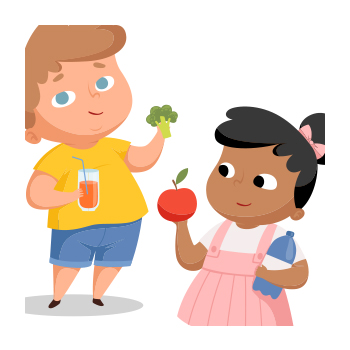


Sign-up for {N}power to get exclusive discounts, newsletters, members-only features, and more!

There is a silent, spreading-like-wildfire health epidemic affecting our youth, negatively impacting their health today and hindering their full health potential well into adulthood, and it’s called nonalcoholic fatty liver disease (NAFLD). Driven by factors like obesity, a lack of regular exercise, and a diet devoid of adequate nutrients and full of processed and sugary foods, children and adolescents are directly feeling the effects of this rapidly growing disease, characterized by too much fat stored in liver cells. According to one report, the incidence of NAFLD in children and adolescents (0-17 years) has increased by nearly 170% since 2017,1 and we are failing them by ignoring the problem. But with awareness and action, this is an epidemic we can reverse, giving our children the gift of good health and setting them up for a long, healthy life.

As the largest internal organ in the body, the liver is a heavy lifter. It removes toxins, maintains healthy blood sugar levels, regulates blood clotting, stores and even makes certain vitamins and minerals, regulates amino acid levels, plays a role in healthy digestion, and more. In fact, it performs more than 500 vital functions in the body, so keeping the liver healthy is crucial for overall health.2
When it comes to liver disease, there’s a long-running misconception that you can only damage the liver by drinking too much alcohol, using drugs, or by taking medications that can harm this vital organ (one reason NAFLD goes unrecognized in children), but the reality is that risk factors like obesity, a sedentary lifestyle, and a poor diet wreaks havoc on liver health—and are the main factors contributing to the rise of NAFLD in children and adolescents.
NAFLD in children is associated with hyperlipidemia (excess fat in the blood), insulin resistance, and obstructive sleep apnea.3 Studies also show that children and young adults with NAFLD have significantly higher rates of cancer, liver-related death, and cardio-metabolic mortality.4 According to research, “The worldwide prevalence of NAFLD in children is a worrying phenomenon because this disease is closely associated with the development of both cirrhosis and cardio-metabolic syndrome in adulthood.”5
According to one report, the incidence of NAFLD in children and adolescents (0-17 years) has increased by nearly 170% since 2017.1
Over the past decade, the incidence of NAFLD has increased significantly in children. The percentages of age groups diagnosed with NAFLD are as follows: adults (25%), adolescents 15 to 19 years (17%), children 10 to 14 years (11%) and children ages 5 to 9 years (3%).6 What’s more, approximately one-third of obese male children and one-quarter of obese female children are estimated to have NAFLD.7 Race can also determine the risk of NAFLD, with Asian-American and Latino children thought to be at a higher risk compared to their white and African-American counterparts.8 9 Although the majority of children with NAFLD are overweight or obese, there is an increasing subset of children with a normal body mass index with so-called “lean NAFLD.”
Research has determined that “The current standard-of-care treatment of NAFLD in children is lifestyle change and increased physical activity.” In other words, a better diet and more movement.

How can we motivate our kids to get active again? Reduce screen time, for starters. Our “smart” technology has played a huge role in this modern health crisis—in the last decade, an increase in screen time has led to an increase in a sedentary lifestyle and obesity rates among children and adolescents. On average, children ages eight to 12 in the United States spend four to six hours a day watching or using screens from televisions, smartphones, tablets, or computers. Teens spend up to nine hours a day on said devices. While screens can entertain, teach, and keep children occupied, too much use can lead to problems such as sleep issues, weight problems, less time outdoors and a reduction in physical activity.10 11 12 13 14
Yes, it can be challenging, but reducing your child’s screen time opens up room for more play and movement. It may take some encouragement on your part, but even something as simple as a daily family walk goes a long way! A 2023 study found that just 150-minutes of moderate to intense exercise a week significantly reduces liver fat.15

It’s up to us as adults to ensure we give our children the foundation they need for a lifetime of good health. With less screen time, more movement, a cleanup of their diet, and a few select supplements, a healthy liver—and a healthy body—are possible.



Sign-up for {N}power to get exclusive discounts, newsletters, members-only features, and more!